There’s never been a better time to dig in and grow your own food. Gardening is more than just planting seeds—it’s fresh air, sunshine, and a big mood boost. It’s also a great way to pick up a new skill, keep kids busy (they love digging in the “soil”), and enjoy the pride of harvesting food you grew yourself.
From planning and planting to harvesting and cooking, a garden gives you that amazing sense of self-sufficiency—and the reward of delicious meals straight from your backyard.
What is a Victory Garden?
Victory gardens started in World War I and II, when Americans were encouraged to grow food anywhere they could—backyards, rooftops, even fire escapes—to support the war effort. By 1944, over 20 million gardens were producing 40% of the nation’s fresh vegetables!
Today, the idea is less about patriotism and more about health, sustainability, and flavor. Simply put: nothing beats the taste of vegetables picked that day for meals.
What Should You Grow?
Classic victory gardens focused on nutrient-packed veggies like beans, carrots, peas, cabbage, lettuce, squash, and tomatoes. Gardeners were also encouraged to use succession planting—replanting new crops as others were harvested to keep fresh food coming all season long.
That advice still holds true today. But here’s our modern twist: plant what your family actually likes to eat. A garden full of kale isn’t much good if nobody touches it at the table!
Once you’ve made a family “favorites” list, decide how much to plant. As a general guide, start with the amount listed per person, then multiply for your family size. Growing for vegetarians, planning to preserve food for winter, or looking to donate to your local pantry? Plant a little extra.

Vegetables and Herbs for Your Victory Garden
Want to take your homegrown meals from simple to spectacular? Add a few herbs to your garden alongside your veggies.
-
Basil – Perfect with tomatoes for fresh bruschetta. Two plants will do, but if you dream of homemade pesto (it freezes beautifully), plant a few more for a plentiful harvest.
-
Chamomile – A cheerful flower that attracts pollinators and doubles as a calming tea ingredient.
-
Cilantro – A must-have for salsa lovers and anyone who craves authentic Mexican flavors.
Now it's time to get planting. For more than 100 years, Bonnie Plants® has been growing the best varieties to help home gardeners succeed. Remember: healthy gardens start with healthy soil.
In-ground beds: Mix Miracle-Gro® Organic™ Garden Soil , crafted with organic compost, into your native soil to loosen clay, enrich sandy spots, and boost nutrients.
Raised beds: Fill or refresh with Miracle-Gro® Organic™ Raised Bed & Garden Soil, packed with the right blend of composted materials and nutrients.
Finish strong by watering consistently and feeding your plants (and the soil!) with Miracle-Gro®Organic™ Plant Food (liquid) or Miracle-Gro® Organic™ All Purpose Plant Food (granules)-to keep your soil and crops thriving all season.
Have Fun with Your Victory Garden
A victory garden isn’t just about self-sufficiency—it’s about joy! Gardening can bring your family together in fun, creative ways.
Make it a game: Let everyone pick their own plant to care for, then hand out “awards” at the end of the season—biggest tomato, funniest-shaped carrot, most perfect pepper.
Cook together: Once the harvest comes in, turn it into a friendly cooking challenge. Create new recipes, swap dishes with neighbors, or host an online “garden-to-table” cook-off with friends. After all, it’s perfectly okay to play with your food—as long as you eat it, too!
How Much Should You Plant
| Vegetable | Plants per Person |
|---|---|
| Artichoke | 1–2 |
| Arugula | 5 |
| Asparagus | 10 (perennial—3 years to first harvest) |
| Beans (bush) | 5–10 |
| Beans (pole) | 3–5 |
| Beets | 5–10 |
| Broccoli | 3–4 |
| Brussels sprouts | 2 |
| Cabbage | 3–4 |
| Cantaloupe | 1–2 |
| Carrots | 15–20 |
| Cauliflower | 3–4 |
| Celery | 4–6 |
| Collards | 3–4 |
| Cucumbers | 3–4 |
| Eggplant | 2 |
| Kale | 4–5 |
| Kohlrabi | 6–8 |
| Leeks | 10–12 |
| Lettuce | 8–10 (stagger planting for continuous harvest) |
| Mustard greens | 5–10 |
| Okra | 6–8 |
| Onions | 15–20 |
| Pak choi | 2–3 |
| Peas (shelling) | 25–30 |
| Peas (snap or snow) | 5 |
| Peppers (sweet) | 4–5 |
| Peppers (hot) | 2 |
| Potatoes | 8–10 |
| Radishes | 20–30 (stagger planting for continuous harvest) |
| Spinach | 8–10 |
| Squash (summer) | 2–3 |
| Squash (winter) | 2–3 |
| Sweet corn | 10–12 (plant in blocks for best pollination) |
| Sweet potatoes | 5 |
| Swiss chard | 3–4 |
| Tomatillos | 2 |
| Tomatoes (cherry) | 1–2 |
| Tomatoes (sauce) | 3–6 |
| Tomatoes (slicing) | 3–4 |
| Turnips | 6–10 |
| Watermelon | 1–2 |
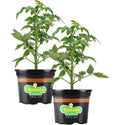
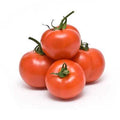


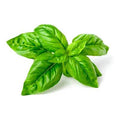 Herbs
Herbs
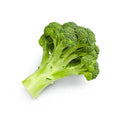 Vegetables
Vegetables
 Fruit
Fruit
 Flowers
Flowers
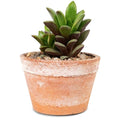 Succulents
Succulents


